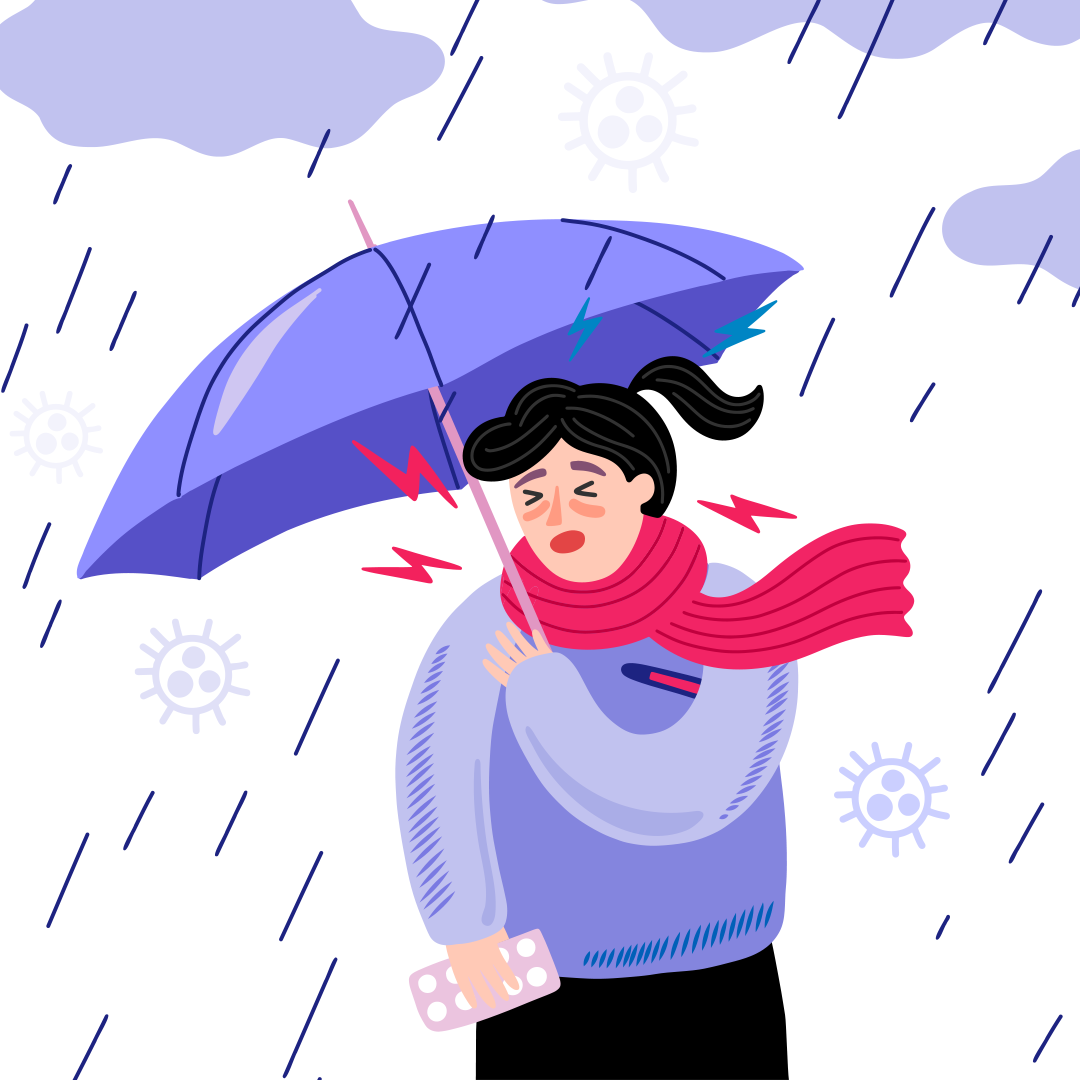Managing Allergies During the Rainy Season

Monsoons are a great relief from the heat wave but cause trouble for people with seasonal allergies. Increased moisture combined with increased pollen release in the air during monsoons aggravates the symptoms to a very high degree.
Mould and dust mites, common causative allergens, increase as humidity increases. Dealing strategically with these symptoms reduces discomfort and promotes well-being in this damp season.
It is important to consider the impact of the rainy season on allergies to implement effective interventions and enjoy cooler weather without any form of distress. Let us look at the different things you must consider to alleviate symptoms of allergies.
Common Allergy Triggers During the Rainy Season
Although the rainfall relieves the heat for many, it greatly exacerbates triggers of seasonal allergies. Here are the common allergy triggers:
- High Moisture: Mould grows in high-moisture conditions and produces spores, which become airborne and are easily inhaled into the body. This causes symptoms such as wheezing, coughing, and nasal congestion. High humidity encourages the growth of dust mites and strong allergens, particularly in bedding and upholstered furniture.
- Pollen: Heavy rains wash off pollen, but light showers may stir settled pollen and lift it into the air. Besides, plants release more pollen after rainy periods, causing sudden spikes in the pollen count.
- Outdoor Allergens: More rainfall allows for lush plants and more outdoor allergens. Due to flowering plants or grasses outdoors, this longer allergy season significantly increases the intensity and duration of symptoms for many people. Molds breed in stagnant rain water and contribute to increased outdoor allergens.
Strategies to Manage Symptoms of Allergies
Managing the various aeroallergen-driven symptoms of allergies effectively in the rainy season requires a multifaceted approach. Here are the ways you can manage the symptoms:
- Control Indoor Humidity: Molds and dust mites are the most common indoor humidity control concerns regarding allergens. The dehumidifiers help keep the air drier, thus minimizing mould and dust mites. However, air purifiers with HEPA filters are particularly effective at cleaning indoor air of allergens such as mould spores and pollen.
- Maintain Cleanliness: Regular house cleaning is the key to reducing these allergens to a minimum. Clean damp areas that attract mould, such as the bathroom and kitchen. Washing your bedding, curtains, and other fabrics in hot water regularly will kill dust mites and reduce mould.
- Ventilation: Windows should remain closed when outdoor pollen counts are high to prevent allergens from entering. Air conditioners filter and recirculate indoor air, further reducing humidity levels.
- Personal Hygiene: Personal hygiene reduces exposure to allergens. Washing your hands regularly, changing into fresh clothes when you reach home, and having a shower before retiring will help wash off pollen and other allergens from the body and hair.
- Medication and Treatment: Over-the-counter antihistamines and nasal sprays control symptoms. If they are not relieved, consult a medical practitioner to prescribe medicines.
Thus, you can get fully equipped with the most appropriate management of allergies, giving the best defence against the seasonal surge of allergens during the monsoon.
Preventive Measures
Adopt preventive strategies to target the unique challenges of increased moisture and pollen to manage and reduce allergies effectively this rainy season.
1. Monitor the pollen count
Listen to weather reports or use phone apps to get an idea of the pollen count in your area. This helps you schedule your outdoor activities when the counts are at their lowest. Minimal time outside means minimal exposure to things that cause symptoms.
2. Good housekeeping
Items like toys and gardening equipment can harbour allergens such as pollen and mould. Ensure they are clean and dry when not in use. Store these items in airtight containers or under wraps to avoid the growth of mould and dampness that can build up allergies.
3. Allergy-Proofing Home
Minimize indoor allergens by encasing pillows, mattresses, and box springs in allergen-proof covers. These covers prevent dust mites and other allergens from penetrating surfaces where dust usually settles.
Keep minimal indoor plants, as mould can grow in their soil. Choosing hypoallergenic plants and ensuring good air circulation reduces potential allergens from indoor greenery.
Conclusion
Proactive management and prevention are the keys to a comfortable rainy season with minimal symptoms of allergies. Control indoor humidity to avoid allergens, keep the house clean and hygienic through regular upkeep and ensure proper ventilation to keep the air fresh and clean through good airflow.
Monitoring pollen count and making the home allergen-proof are the greatest ways to deal with an allergy-prone climate. Consult an experienced and trustworthy physician to guide you about preventive measures for allergy symptoms this rainy season with Bharosa.life.
Sign up to find reviews from several customers to get the best professional help!
